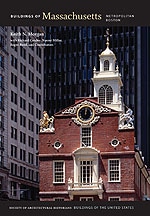
The Middlesex Fells Parkway in Medford and Malden is significant as one of the earliest regional connecting parkways in the United States. Charles Eliot planned a route from Somerville, then the urban edge of Boston, to two promontories on the southern edge of the Middlesex Fells, a woodlands reservation of the Boston Metropolitan Park System just over five miles from the statehouse. Eliot's design image was, fittingly enough, a tree: the tangled roots in the streets of Somerville; the trunk, Wellington Bridge and the Fellsway; and the two limbs, Fellsway East and West. From these limbs, the smaller branches—park drives—threaded up through the foliage of the Fells. Eliot designed a multimodal corridor, with sidewalks for pedestrians and bicyclists, divided roads for carriages, and median tracks for street trolleys, such that “after threading the maze of city streets, cars and carriages will find relief and opportunity to speed away to the Fells and northern suburbs” (according to the 1895 Annual Report of the Boston Metropolitan Park Commission, pp. 42–43). Trolleys traversed the medians until the 1940s. Fellsway East incorporated Fellsmere Pond in Malden; in 1935–1936, this park was completely regraded and relandscaped, by Public Works Administration laborers, to plans by Arthur A. Shurcliff.

